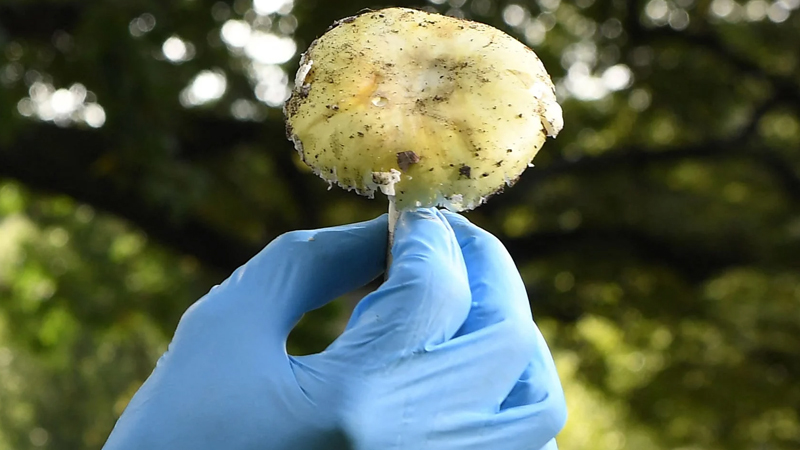Scientists may have formed the first antidote to the world’s deadliest mushroom

WILLIAM WEST / Contributor / Getty Images
The death cap is the most deadly mushroom known to man. It kills an estimated 100 people each year and sickens many more.
Many of its victims are unsuspecting foragers who mistake it for edible fungi such as puffballs and paddy straws.
According to Yahoo News, there is no cure for the mushroom’s lethal toxicity. If you eat one by mistake, even half a cap can cause your liver to shut down, the only way to survive is to go to the ER. But that might change shortly.
A new study issued in Nature Communications discovered a possible death cap mushroom remedy. According to the researchers, an FDA-approved chemical known as indocyanine green (ICG) can suppress the mushroom’s deadly toxin.
Scientists have been studying death cap mushrooms since the early 1700s, but an antidote has remained elusive because “we know little about how mushroom toxins kill cells,” according to Qiaoping Wang, a professor of pharmacology at Sun Yat-Sen University and one of the study’s primary authors.
Many poisons, such as cyanide and botulinum toxin, can be eliminated or denatured by heating, drying, cooling, or boiling. However, none of these approaches are effective against the death cap’s toxin, alpha-amanitin.
Wang and his colleagues used the gene-editing technique CRISPR to find a possible antidote. They examined hundreds of human genes and identified STT3B, a possible type of enzyme. Cells lacking this STT3B, in particular, survived when the scientists poisoned them with alpha-amanitin.
However, reducing STT3B in cells with CRISPR is not something that can be done on a poisoned, dying patient in a hospital. To find a viable antidote for death cap sufferers, the researchers tested various chemicals and their effects on STT3B.
In the chemical indocyanine green, they found a potential possibility. “ICG is a potential STT3B inhibitor that can prevent AMA-induced cell death,” the researchers said in their paper.
ICG is a dye that is now used to detect abnormalities in blood arteries, tissues, and lymph nodes, as well as to assess liver and heart activities. The results of testing ICG in mice poisoned with the death cap mushroom toxin were shocking.
“ICG has demonstrated significant potential in mitigating the toxic impact of alpha-amanitin in liver cells and mice,” Wang said. Approximately 50% of the mice given the ICG antidote survived the poison. Furthermore, no negative effects of the medication were seen in mice.
Of course, further study is needed to see whether there are any therapeutic advantages in human beings.
“To this end, the research team intends to conduct human trials to assess ICG’s efficacy in individuals who have recently ingested toxic mushrooms,” Wang told Insider. “These tests will yield more definitive results and provide a clearer picture of ICG’s potential to revolutionize the treatment of mushroom poisoning,” Wang said.


